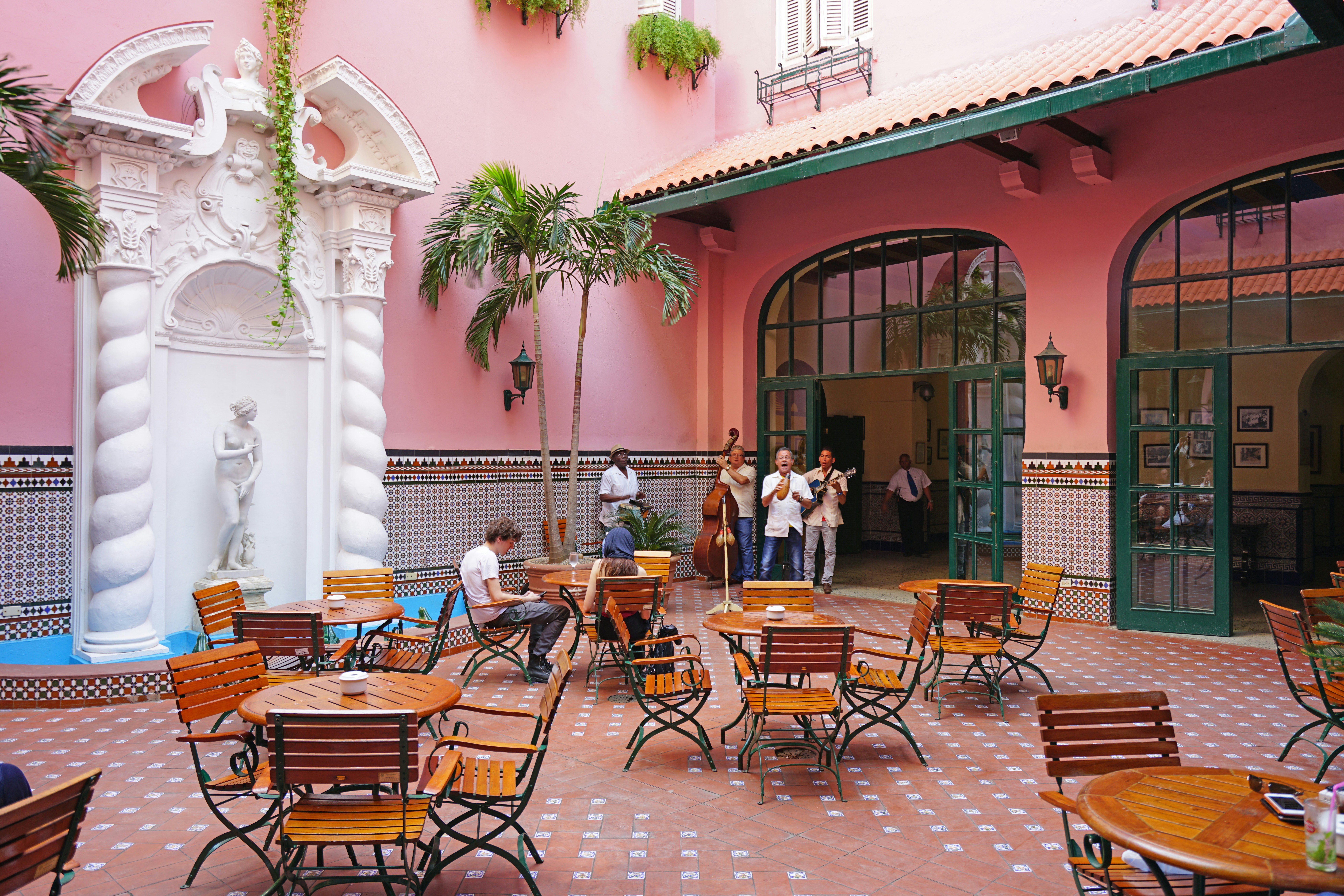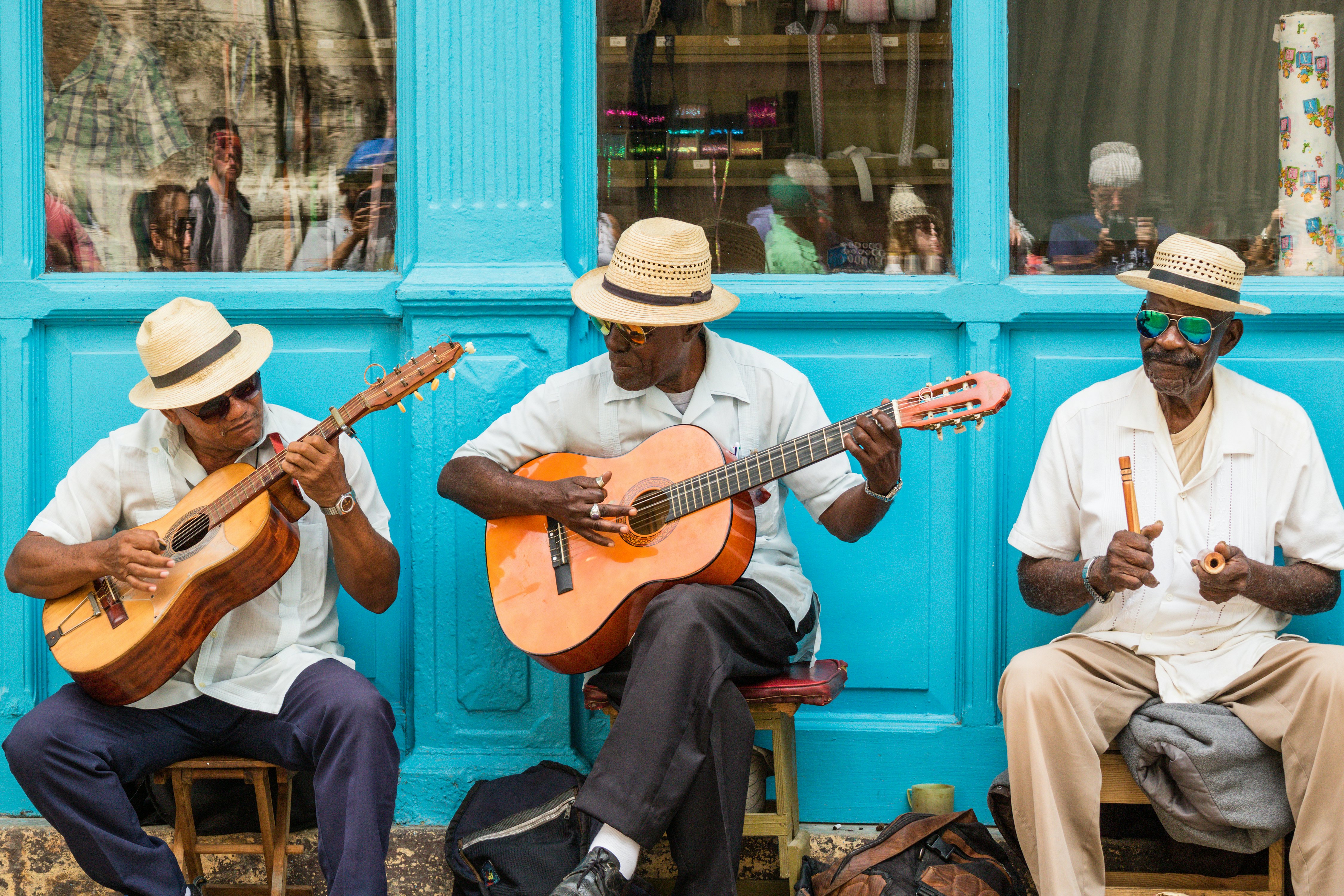
The 30 best countries, cities and regions to visit in 2025

Feb 14, 2022 • 6 min read

The Hotel Nacional de Cuba has hosted everyone from Frank Sinatra to Winston Churchill © Joel Villanueva / Getty Images
Cuba has a wide array of accommodation options, from Havana’s emblematic Hotel Nacional – where Winston Churchill and Frank Sinatra once filled the halls with cigar smoke – to a humble homestay in bucolic Las Tunas. Your biggest decision will be whether to opt for a privately-run casa particular (private homestay) or a state-owned hotel.
Casas range from simple family homes where you may have to shimmy around a bicycle on the front porch to get to your room, to more professional self-contained apartments. State-run places include converted colonial palaces and all-inclusive beachside resorts. Here’s a quick guide to everything you need to know about accommodation in Cuba.
Casas particulares are arguably the best accommodation option for independent travelers in Cuba. Staying in these secure establishments – many of which are family-run – is a great way of meeting locals and other travelers. They offer an authentic and uncensored view of the country and can enhance your understanding and appreciation of Cuba as a result.
Staying in one also puts money directly into the pockets of private individuals, many of whom have struggled to make a living since the pandemic. Bank on relatively economic prices for standard no-frills casas, starting at the equivalent of US$20 a night in the provinces and going up to US$80 or US$100 in some of the nicer places in Havana.
Casas act as important information portals helping first-timer visitors negotiate the tricky waters of Cuba’s confusing culture and economy. Owners also make excellent unofficial tour guides and can usually arrange a number of extra activities from taxis to nature walks.
Houses that rent generally display a blue insignia or sign on the door marked 'Arrendador Divisa'. There are thousands of casas particulares all over Cuba – although some of them have ceased operating or have temporarily suspended their services since the pandemic.
From their inception in the mid-1990s until the early-2010s, casas were heavily regulated and limited in what they could offer. With the loosening of restrictions in 2011, the goalposts were widened. These days, you can stay in fancy penthouses and carefully restored historical homes, although most houses are still family residences that rent out a few rooms.
Owners pay a monthly tax per room depending on location and must keep a register of all guests. Each new arrival has to be reported to the authorities within 24 hours. For this reason, you’ll be requested to produce your passport (not a photocopy) when you arrive.

Regular government inspections ensure that conditions inside casas remain clean, safe, and secure. Most proprietors offer breakfast and dinner for an extra rate (usually the equivalent of US$5 and US$10 respectively). Hot showers are a prerequisite. In general, rooms these days provide at least two beds (one is usually a double), fridge, air-con, fan, and private bathroom. Bonuses could include a terrace or patio, private entrance, TV, security box, mini-bar, kitchenette, and a parking space.
In the last few years, many casas have started offering wi-fi although the signal might be weak and only available at certain times. Similarly, some of the more successful houses have expanded and become more businesslike operating more like small private hotels.
To minimize the amount of cash you take to Cuba, it is handy to book and pay for your casa particular in advance. Airbnb and Expedia both take reservations (although Booking.com doesn’t). Alternatively, you can make direct contact with the owner through email or WhatsApp. Some owners will be able to set up payment via PayPal.
If you’re paying in person, foreign cash is generally accepted (euros are the preferred currency). Almost no casa owners have credit card machines.

All tourist hotels and resorts are at least 51% owned by the Cuban government and are administered by one of four main organizations.
Islazul is the cheapest option. Mostly utilized by budget-minded Cubans, the brand manages hotels in Cuba’s smaller provincial towns, often in ugly Sovietesque buildings from the 1960s and ‘70s. Beware the blaring on-site discos that often keep guests awake until the small hours.
Cubanacán is a step up and offers a mix of midrange and top-end establishments in cities and resort areas. The company’s best options are its reasonably-priced boutique-style hotels (packaged under their ‘Encanto’ brand) that embellish attractive city centers in places like Sancti Spíritus, Remedios, Camagüey and Santiago.
Gaviota manages higher-end resorts in all-inclusive zones. They also oversee Havana’s two-dozen or so historic hotels encased in handsome old buildings in Habana Vieja.
Gran Caribe handles midrange to top-end hotels, including the emblematic Hotel Nacional in Havana.
At the top end of the hotel pyramid, you'll often find foreign chains running all-inclusive hotels in partnership with Cubanacán, Gaviota, or Gran Caribe – mainly in the resort areas. The standards and service at these types of places are not unlike resorts in Mexico and the rest of the Caribbean. Hotel chains with a strong presence in Cuba include Meliá, Iberostar, MGM Muthu, NH Hotel Group and Kempinski.
All-inclusive resorts are nearly always booked in advance through a package holiday company with flights, meals, and transfers included in the price. Factors swaying your decision will be price, the brand of the hotel (Kempinski, Iberostar, etc), the type of facilities (adults-only versus family-friendly, for example), and which resort area you’d like to stay in. Varadero, Cayo Santa Maria, Cayo Coco, and Holguin are Cuba’s most popular hotel zones.
State-run hotels display their prices in Cuban pesos. If you’re paying in person, you’ll need a non-US credit card and will be charged at official Cuban bank exchange rates.
Rates in casas particulares don’t fluctuate much, while hotel prices oscillate seasonally like the rest of the Caribbean. The high season is mid-November to late March. The low season is generally mid-September to mid-November and April to June (except for Easter week). Christmas and New Year is what's called extreme high season when rates are 25% more than high-season rates.

Campismos are where Cubans go on vacation. Hardly camping, most of these installations are simple concrete cabins with bunk beds, foam mattresses, and cold showers. There are over 80 of them countrywide predominantly in rural areas. Roughly half-a-dozen campismos are ranked ‘internacional’ meaning they’re open to non-Cubans and are a little more upscale, with air-con, hot water, and/or linens.
Listings can be found on the website campismopopular.cu. Every provincial city in Cuba has a campismo office where you can book ahead. Cabin accommodations in international campismos cost from the equivalent of USD$20 to USD$60 per bed per night.
When tourist demand was growing in the late 2010s, Cuba began a spree of hotel building. Work has continued despite the pandemic.
There are a couple of new ventures now operating on Cayo Guillermo in Ciego de Ávila Province, including Cuba’s first LGBTQI+ hotel, the Muthu Rainbow. Further east along the coast lies Cayo Cruz, an entire new tourist island with three resorts to date.
Havana has sprouted a good half-dozen new five-star hotels in the 2020s, including two historic hotels in Plaza de San Francisco de Asís in Habana Vieja, the Hotel Prado y Malecón in Centro Habana; and Hotel Grand Aston on the Malecón in Vedado. Still in development is Torre K, a 40-floor hotel tower in Vedado which will become the tallest building in Cuba when it is completed.
You might also like:
A guide to visiting Cuba during COVID-19: what it's like to travel there now
Exploring Cuba's most gorgeous beaches
Cuba’s most beautiful national parks